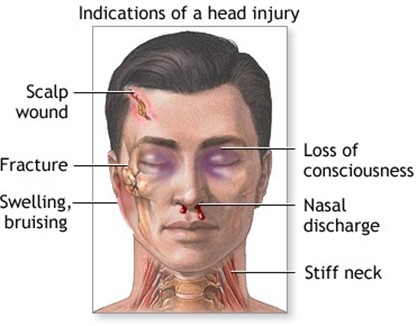Related Questions
Correct Answer is C
Explanation
Choice A Reason: This choice is incorrect because inserting a central line is not a priority action for a client who has a sucking chest wound. A central line is a catheter that is inserted into a large vein in the neck, chest, or groin to administer fluids, medications, or blood products. It may be indicated for clients who have hypovolemia, sepsis, or shock, but it does not address the underlying cause of the client's respiratory distress.
Choice B Reason: This choice is incorrect because removing the dressing to inspect the wound may worsen the client's condition. A sucking chest wound is an open wound in the chest wall that allows air to enter and exit the pleural cavity with each breath. This creates a positive pressure in the pleural space that collapses the lung on the affected side and shifts the mediastinum to the opposite side, impairing the ventilation and circulation of both lungs. Therefore, the nurse should apply an occlusive dressing that covers three sides of the wound and allows air to escape but not enter the pleural cavity. Removing the dressing may allow more air to enter and increase the risk of tension pneumothorax, which is a life-threatening complication.
Choice C Reason: This choice is correct because administering oxygen via nasal cannula may help to improve the client's oxygenation and ventilation. A nasal cannula is a device that delivers oxygen through two prongs that fit into the nostrils. It can provide oxygen at low flow rates (1 to 6 L/min) and low concentrations (24 to 44 percent). The nurse should monitor the client's respiratory rate, pulse oximetry, and arterial blood gases to assess the effectiveness of oxygen therapy.
Choice D Reason: This choice is incorrect because raising the foot of the bed to a 90° angle may worsen the client's respiratory distress. This position may increase the pressure on the diaphragm and reduce the lung expansion. It may also decrease the venous return and cardiac output, leading to hypotension and shock. Therefore, the nurse should position the client in a semi-Fowler's position (30 to 45° angle) or high-Fowler's position (60 to 90° angle) to facilitate breathing and prevent further complications.

Correct Answer is B
Explanation
Choice A Reason: This is incorrect because the client is not unconscious, as the GCS score ranges from 3 to 15, with 3 being the lowest possible score and indicating deep coma or death.
Choice B Reason: This is correct because the client can follow simple motor commands, as the GCS score for best motor response is 5, which means the client can localize pain by moving his limbs away from the source of stimulation.To interpret the Glasgow Coma Scale (GCS) score provided in the scenario:Eye Opening (E): 3 - The client opens their eyes in response to verbal stimuli.Best Verbal Response (V): 5 - The client is oriented and able to engage in coherent conversation.Best Motor Response (M): 5 - The client can localize pain or follow motor commands (depending on additional context). The total GCS score would be 3 + 5 + 5 = 13, indicating a mild level of impairment or responsiveness.
Choice C Reason: This is incorrect because the client is able to make vocal sounds, as the GCS score for best verbal response is 5, which means the client can orient himself to person, place, and time.
Choice D Reason: This is incorrect because the client does not open his eyes when spoken to, as the GCS score for eye opening is 3, which means the client only opens his eyes in response to pain.

